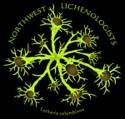Thanks Bruce! It worked perfectly when I keyed backwards from P. acutispora In Aptroot 2012. (“Ascospores with at least one pointed end” fits - posting one more photo.)
Sérusiaux and Coppins 2008 mentions “In SW France, the species seems to be very local and confined to humid valleys and deep gorges in well-preserved localities, but it can be quite common where it grows. Its most important locality is the Gorges of Kakouetta, a deep, narrow and very humid gorge…” which describes Robe Canyon of the Stillaguamish (where I noticed it on several old red alders along the trail) very well.
Regarding specimens reported, CNALH shows 2, from Madeira and the Queen Charlotte Islands. Sérusiaux and Coppins 2008 lists more from BC but none from WA. I couldn’t find more information online, including searching “Recent Literature on Lichens” Wondering if there a relatively simple way unknown to me on finding this kind of information.
Sérusiaux, E. and B. J. Coppins. 2008. Pyrenula acutispora in western Europe, Macaronesia and British Columbia (Canada). Pyrenula acutispora in Westeuropa, Mazedonien und Britisch Kolumbien (Kanada). Sauteria 15:521–528.

